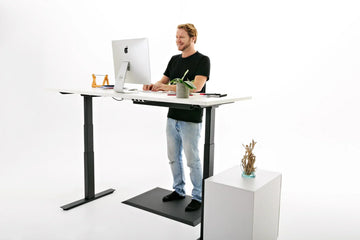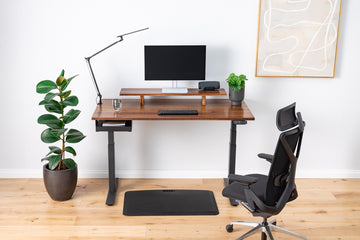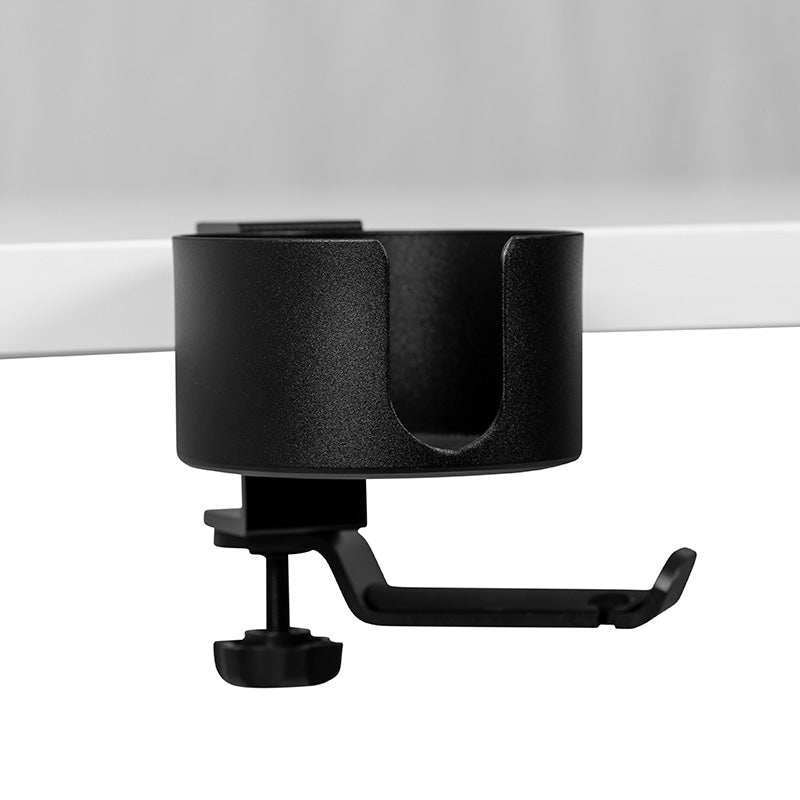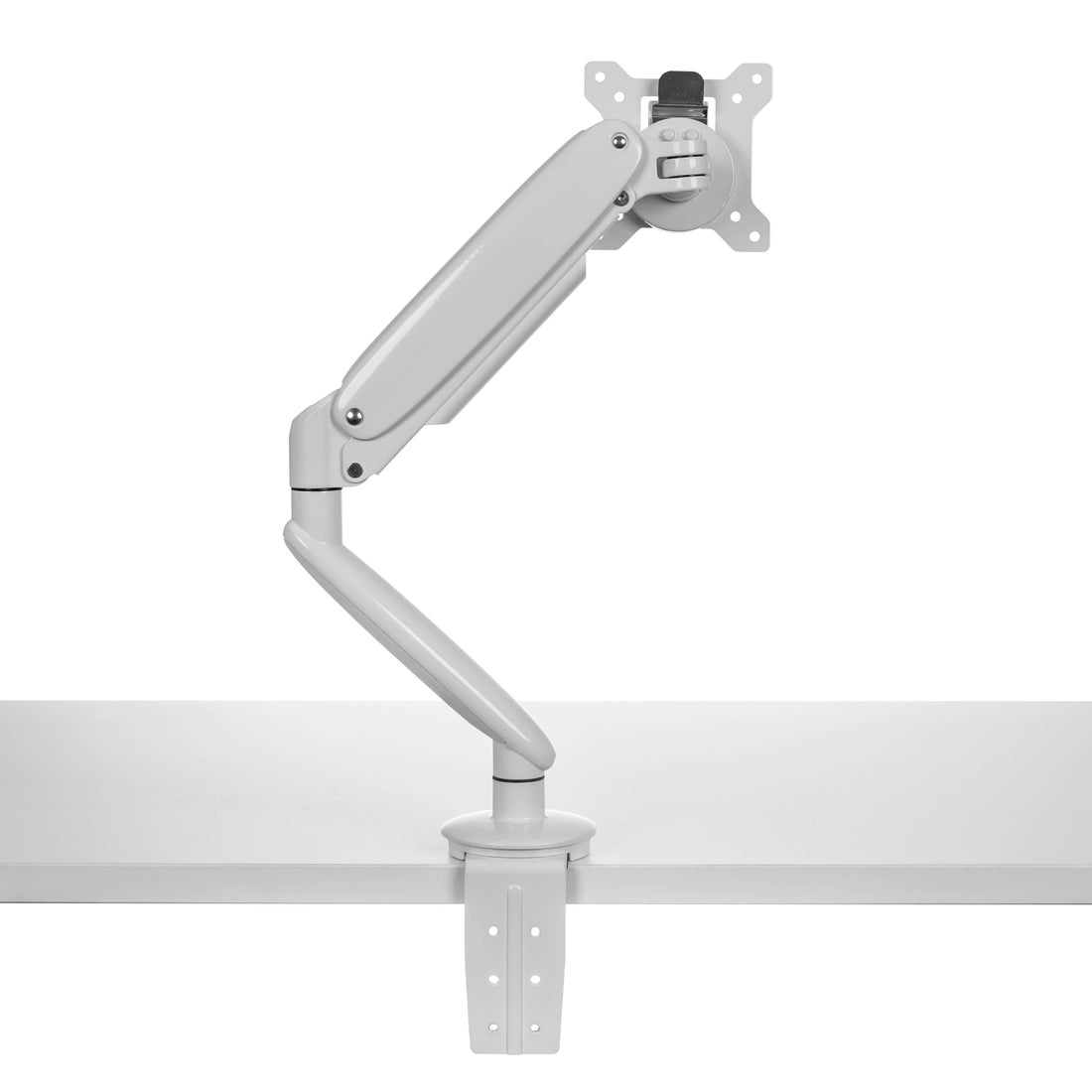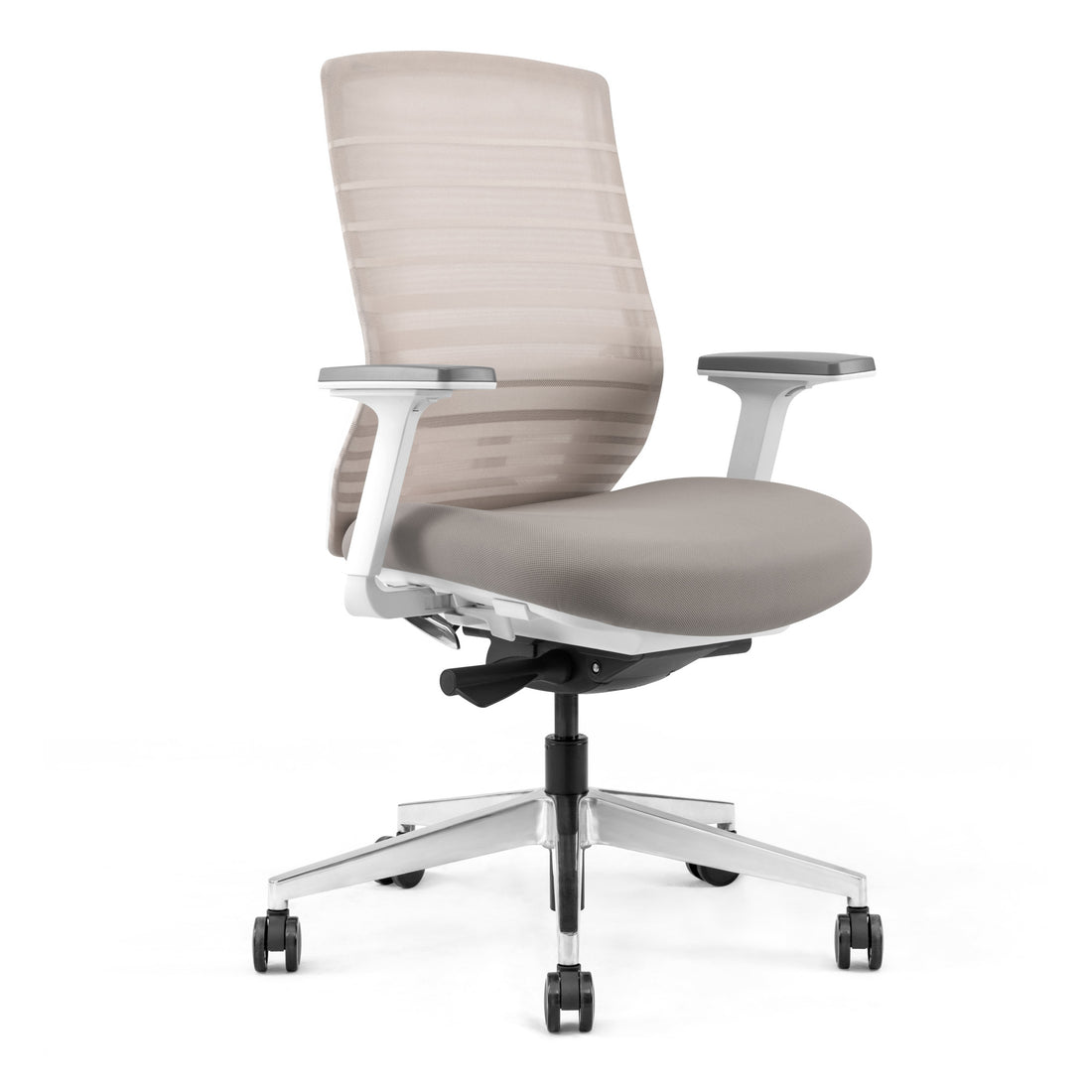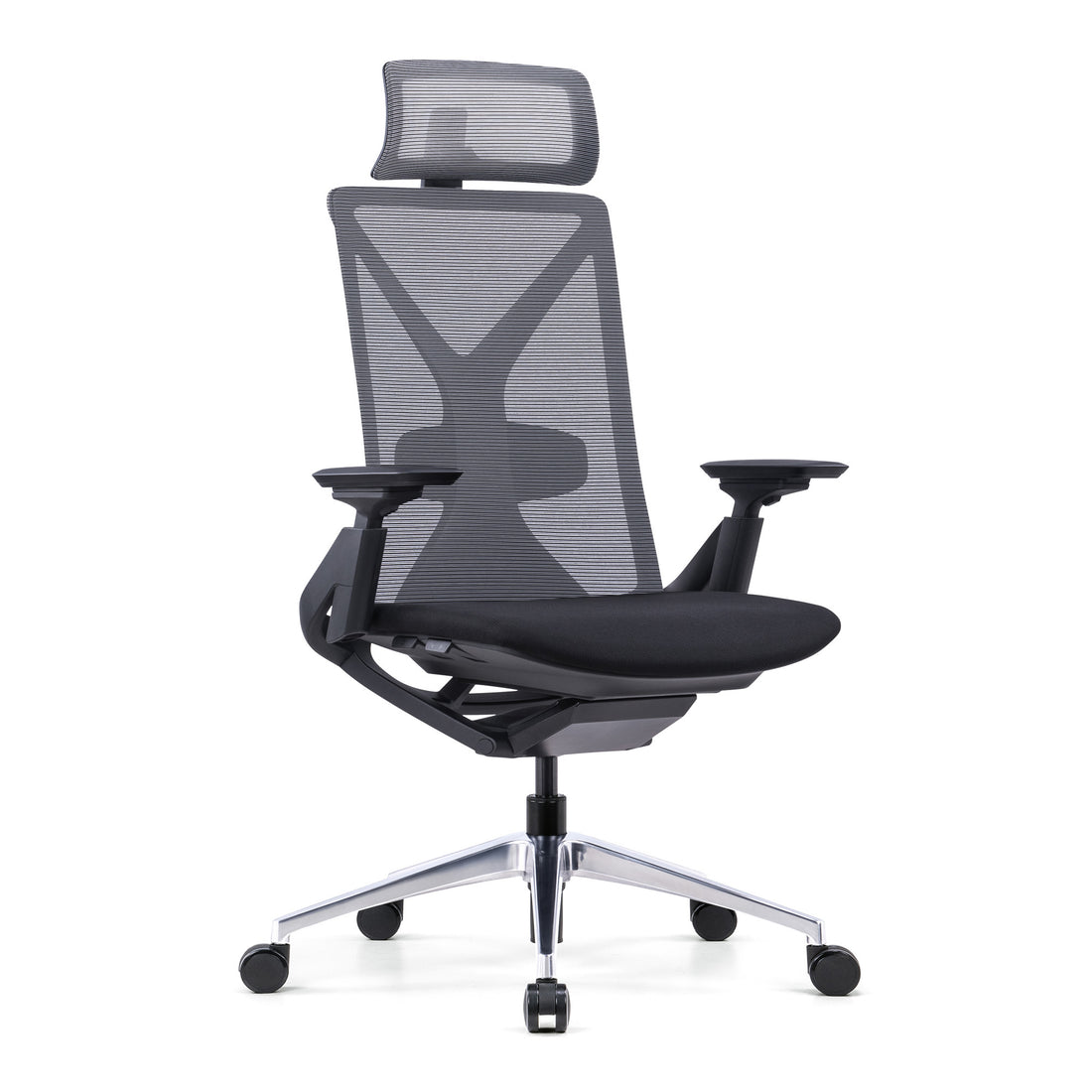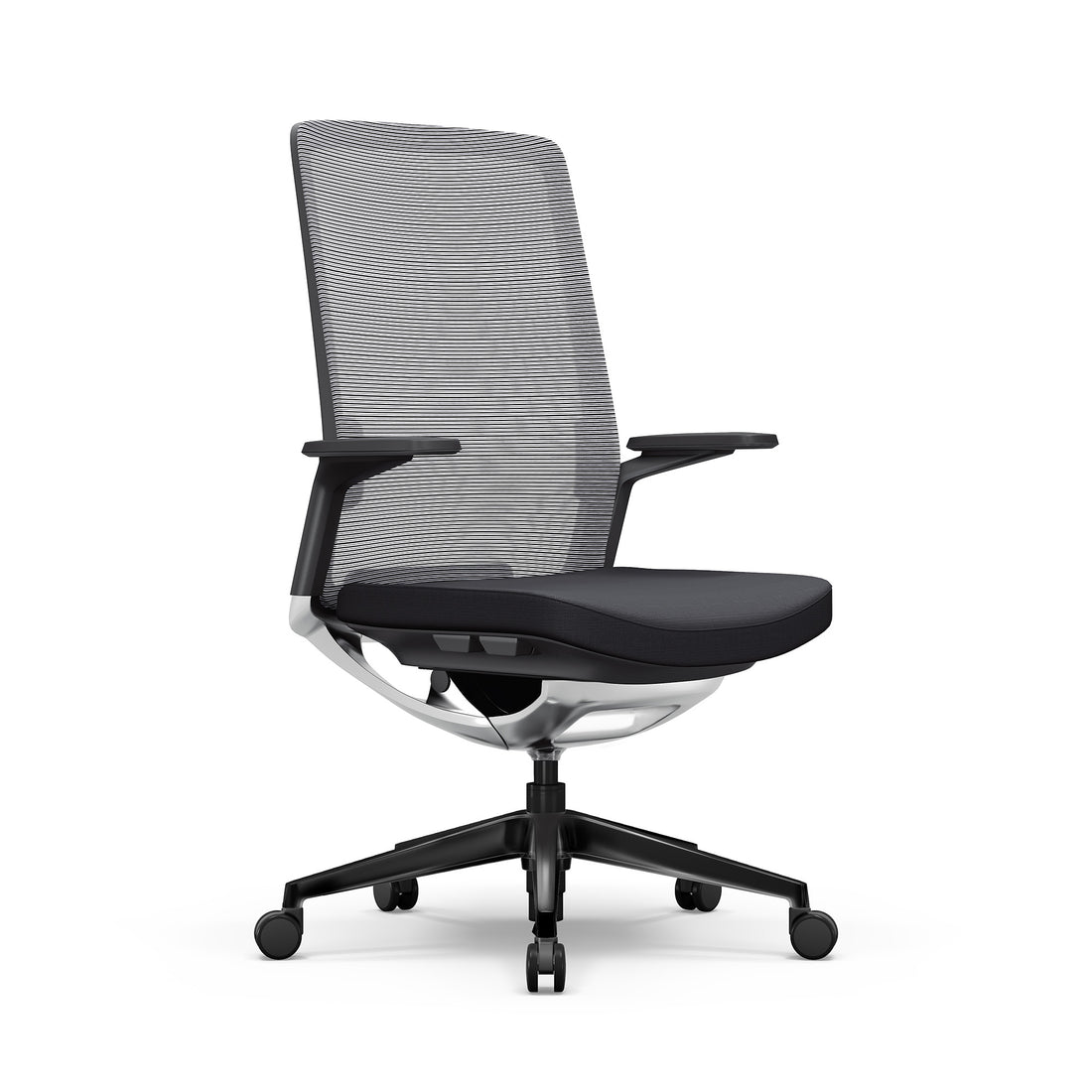Want to learn how to stand at a standing desk? It sounds so simple...but developing good standing desk posture is paramount to reaping the full benefits a sit stand desk has to offer. If you're going to spend the money to invest in a quality sit stand ergonomic desk, you might as well learn how to use it right!
And fortunately for you, you won't have to search for answers any longer. Today, we'll take a deep dive on developing the proper posture for standing desks. Soon, you'll know exactly how to stand at a standing desk with good posture. You'll also learn how not to stand at a standing desk - so you can avoid all the pain and discomfort that comes with poor standing desk posture.
Let's not waste any more time.
Why Learning How to Stand at a Standing Desk is so Important
First things first - why is learning how to stand at a standing desk so important, exactly? Simple - you won't unlock the stand up desk benefits if you're not using it right!
By using a standing desk, you alternate the areas of the body that accumulate physical stress, as opposed to prolonged sitting, which results in physical stress accumulating in the same areas repeatedly. This prevents pain and injury from occurring, which is obviously a great thing. But a standing desk is only worth it if you use it correctly - which is where finding the proper posture for standing desks comes in.
To further reduce the accumulation of physical stress in any particular area, you can also consider alternating your stance when using your standing desk.
However, developing good desk posture isn't one size fits all. Different people may find different stances more comfortable for them - so don't think that you need to stand a certain way. As such, it is worth trialing each of the different stances shown below, to find which position is the most comfortable for you. After all, standing desks are not just for injury prevention and health promotion, but also to increase productivity, and you will be far more productive if you're standing in a position that is comfortable for you.
If you are unsure of how you should stand due to any pre-existing injuries, it may be wise to arrange for an ergonomic assessment so that a qualified physiotherapist can set up your workstation in relation to any musculoskeletal issue you currently have. We'll help you get the most out of your ergonomic workstation!
But without any further ado, let's get into the ideal standing position for your height-adjustable standing desk.
How to Stand at a Standing Desk: Finding the Correct Standing Desk Posture
Ready to learn how to stand at a standing desk? We'll provide you with a few different ways you can go about optimizing your standing desk posture below. First, we'll unveil a regular standing position stance that most users find best.
Regular Stance
In this position, you are transferring the weight evenly through both feet, which is a good thing.

Tandem Stance
It is a good idea not to have your feet too close together in this stance as it might reduce your balance.


Hinged Posture - Avoid Doing This
The natural shape of your lumbar spine wants you to hinge backwards (i.e. lean backwards), as is shown in the photo to the left. You should avoid doing this as it places increased stress on the lumbar spine (lower back area).
By swapping between the different stance postures shown above, you will avoid falling into a hinged posture.
Bad Standing Desk Posture: Avoid Doing This to Prevent Hip, Back, and Neck Pain!
We've showed you how to stand at a standing desk. And now, we want you to see an example of bad posture for standing desks so you can avoid it. Doing so will help eliminate the risk of hip pain, back pain, and other discomforts.
The natural shape of your lumbar spine wants you to hinge backwards (i.e. lean backwards), as is shown in the photo to the left. You should avoid doing this as it places increased stress on the lumbar spine (lower back area).
By swapping between the different stance postures shown above, you will avoid falling into a hinged posture.

Final Thoughts on the Correct Posture for Standing Desks
We hope this quick resource helps you find the ideal posture for standing desks. The different stances shown above should not complicate the process of using a standing desk. After all, standing is one of the most simple things that we can do! They are simply shown to ensure that your standing desk experience is as comfortable as possible, thereby increasing your productivity and decreasing your pain.
If you haven't found your ideal sit stand desk yet, you can head over to UpDown Desk for the best electric standing desk in Australia. From sit stand corner desks to manual standing desks, stand up desk converters, and even accessories to help you make the most of your investment.
We also encourage you to read our resources on setting the ideal standing desk height and how long to stand at your standing desk. We're here to help you live a more productive, pain-free lifestyle with ergonomic office desks that exceed expectations!
